There are several terms that describe Mo Ganji’s art in the context of our earthly presence: single line, essence, reduction, one – in the context of ‘we are one’. He visualises the world and its inhabitants, searching for meaning. His intention is to use his art, again and again, but in a subtle way, to draw attention to meaningful actions and deeds.
Image above: Mo Ganji, courtesy the artist (Detail)
Mo Ganji was inspired by great thinkers such as Aristotle with his theory on ‘essence’ (ousia) (Aristotle’s concept of ousia – that which makes something what it is. His thinking closely corresponds to the modern concept of ‘core’). In particular, Ganji shares Baruch de Spinoza’s philosophy that nature is perfect in itself. Baruch de Spinoza (1632–1677) was one of the most important philosophers of modern times, often referred to as the ‘philosopher of unity’ or the ‘God-nature philosopher’. He lived in the Netherlands and is considered a leading representative of rationalist thinking. His main work is called ‘Ethics’ (Ethica ordine geometrico demonstrata) – Ethics, presented in geometric order.
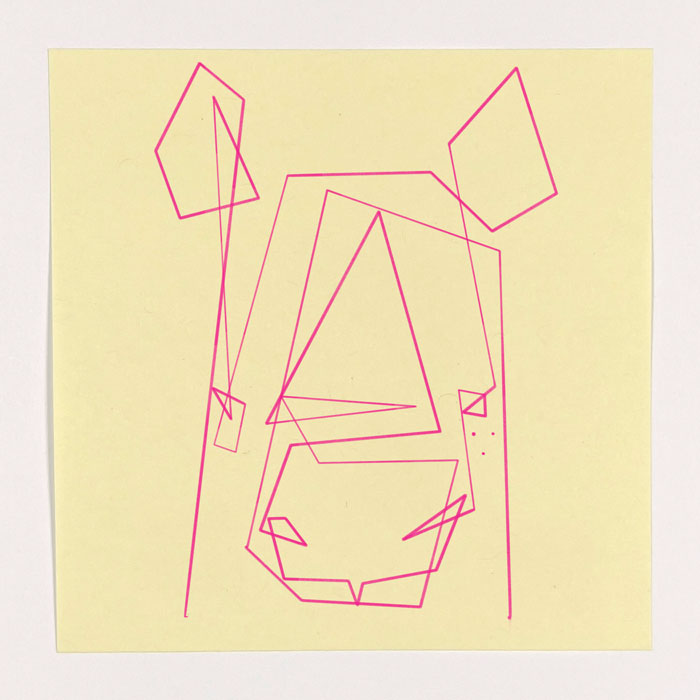
One-Line-Art (Ein-Linien-Kunst)
• Principle: A motif is drawn with a single, unbroken line, with the pen not leaving the paper until the entire image is complete.
• Characteristics: Minimalistic and often abstract, suitable for simple motifs such as faces or plants, but also for more complex scenes; can be meditative and relaxing.
• Example: Pablo Picasso created animals and scenes using this technique.
Source: Wikipedia
Mo Ganjis’ art is inspired by artists such as Pablo Picasso and Paul Klee. While Picasso showed that a single line is enough to make the essential visible, Paul Klee explained why the line is an autonomous, living means of expression. Together, they form the philosophical and artistic basis of modern single line art.
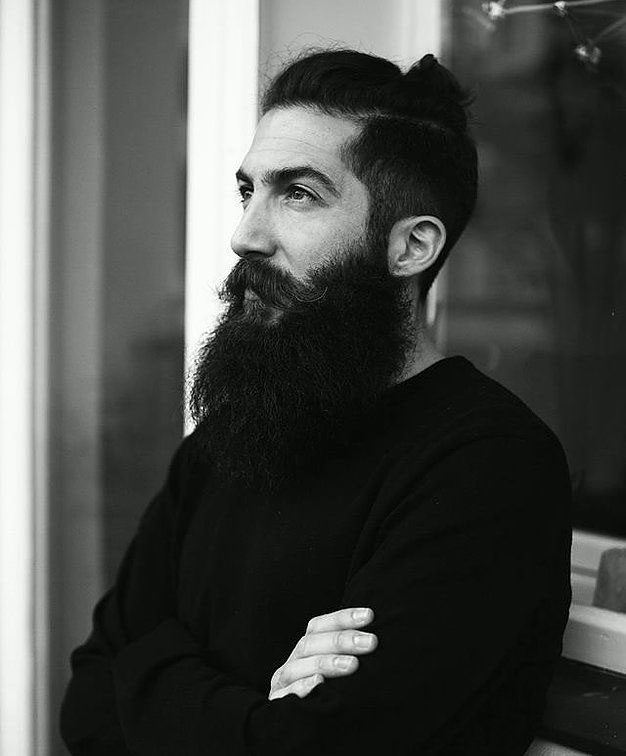
In his work, Ganji fundamentally questions the ideology of speciesism. For him, there is no meaningful, value-based difference between us who inhabit this planet Earth.
„We are all one – we have more in common than is apparent at first glance..“
MO GANJI
Mo Ganji’s art is all-encompassing, yet minimalist – just as minimalist as his lifestyle. His studio contains only the things he needs for his art. Privately, his room now has a bed; for ten years, he slept on the floor, his room containing only a carpet and a palm leaf on the wall for decoration. He slept on the floor, as is customary in his native Iran and as his grandfather had done all his life.
Meaningfulness is his driving force, reduction the consequence.

Reducing, simplifying and minimising are the themes that Ganji deals with. For him, reduction means recognising what is truly necessary, meaningful and alive – and what is mere distraction, excess or destruction.
Our world is facing complex crises, all of which can be traced back to excess: overproduction and overconsumption (resource consumption, waste, climate change), overcomplexity (technology, bureaucracy, information overload), and excessive demands (stress, burnout, loss of meaning).
In all these cases, reduction can be a healing principle – individually, socially and ecologically.
Ganji consistently lives two of the three dimensions of reduction over which he has direct influence. Firstly: inner reduction – less in the mind. Secondly: material reduction – less in lifestyle. With his art, he attempts to raise awareness of the third dimension and addresses systemic reduction – less in society.
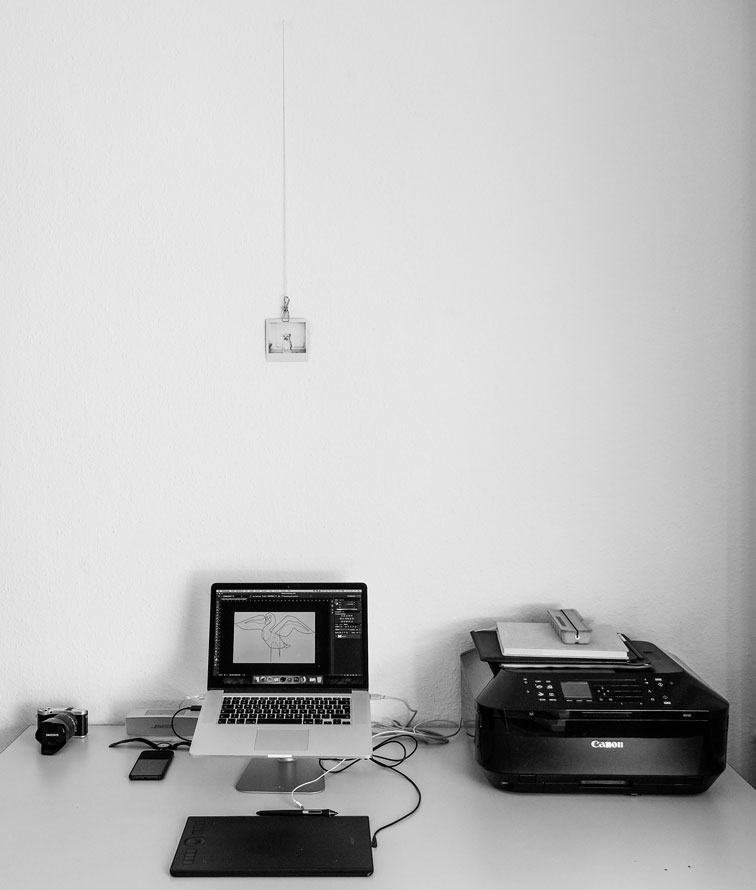
Sustainable societies must make complexity manageable, not constantly increase it. Less energy consumption, less dependence, less inequality.
But: reduction must not mean regression, but rather transformation – intelligent simplification through understanding, technology and ethics.
Reduction as a concept for the future – not regression, but maturation. Reduction does not necessarily mean sacrifice; what is required is efficiency instead of excess, depth instead of breadth, awareness instead of consumption, fewer things – more relationships, less growth – more balance.
This would not be an ascetic world, but a wise world that understands that life needs quality, not quantity. Reduction is therefore not an end, but a return to the origin.
“We are one – many lines, one source.”
Mo Ganji’s works are created from a single stroke – a single line – the ultimate in reduction. A kind of superlative of minimalism. He is a master of this technique, having perfected it over a decade. Every line, every work is an original, a unique piece. In the Netherlands, Mo Ganji is cited by university lecturers as an example of ‘single line design’ and minimalism.

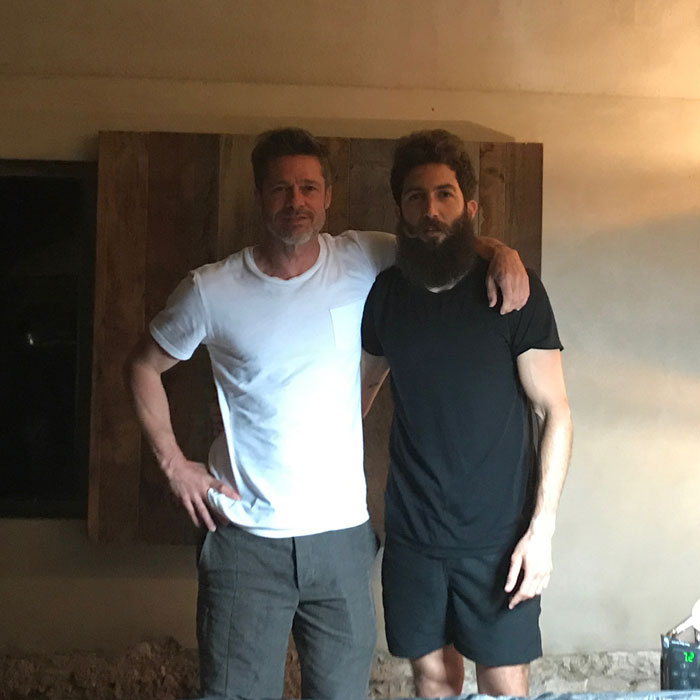
Although his artistic work originated with pen and paper, many people have even had his works tattooed on their skin. As a visual artist, he has already achieved the highest accolades in the field of tattoo art. Famous personalities such as Marcelo Vieira da Silva Júnior, former Brazilian footballer for Real Madrid, and American actor, film producer and two-time Oscar winner William Bradley ‘Brad’ Pitt, who had three of Mo Ganji’s works tattooed on/under his skin.
Media such as VOGUE, ART WEEK (headline: ‘MASTER IN THE ART OF SIMPLICITY’) and the Washington Post (quote: ‘Mo Ganji says more with a single line than others do with an entire canvas’) have written about him and his work.
World Piece
With his artwork ‘World Piece’, he created the largest living connected artwork ever to be applied to the skin. The aim was to create a unique, unifying work of international understanding, bringing together a wide variety of cultures and thus setting an example.

61 people from 61 countries embraced this goal, this idea, and became part of a work of art with one of the most important messages: we are all one.
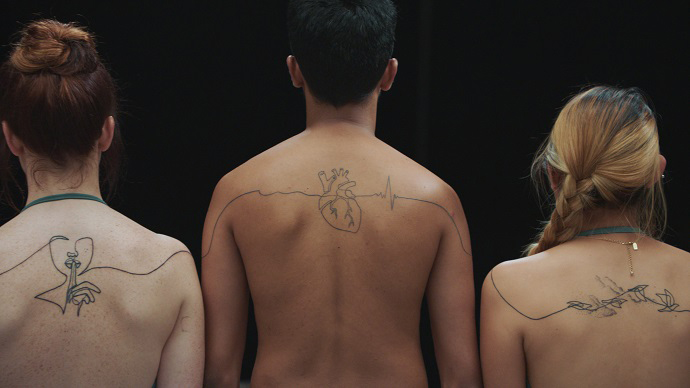
The current work „CORE | KERN | 核心“ – From the series LIFELINE | LEBENSADER | 生命線
In his current work, ‘CORE | KERN | 核心’, Mo Ganji uses standard Post-It notes to highlight the magnificent diversity and beauty of the flora and fauna of our planet Earth, while at the same time warning against their extinction and destruction, which is threatened by human activity. He deliberately chose the Post-it note as the medium/carrier material for this cycle of works, as it represents like nothing else ‘an important note, an important message that must not be forgotten or that points to the completion of an important action/task’. Only after this has been done does it (the Post-it note) follow the path of all earthly things.
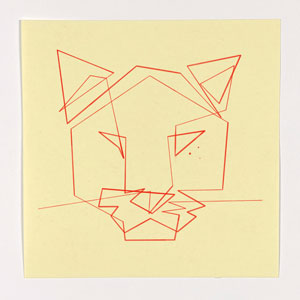

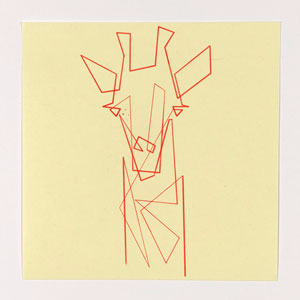
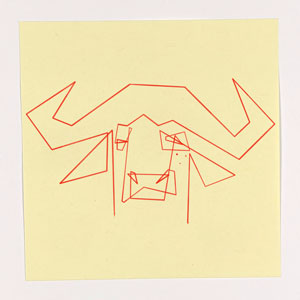





All works above: Mo Ganji, 2025, Drawing pencil on Post-It-note, 7,5 x 7,5 cm
Leonardo da Vinci once wrote: ‘Simplicity is the ultimate sophistication.’ In the tradition of linear reduction, as practised by Picasso, and theoretical reflection on the line in Klee’s work, Mo Ganji positions himself as a contemporary representative of a radically concentrated formal language. His One Single Line drawings combine clarity with inner depth: the line becomes a conscious act – a decision for simplicity, for connection, for meaning. In Ganji’s work, the line lives on as essence and as attitude.
Picasso gave form to the line.
Klee gave it spirit.
Mo Ganji gives it meaning..
Andreas Kramer, DEEDS.NEWS
MO Ganji’s ‘Works Cycle 1 – CORE | KERN | 核心’, 250 single-line works on Post-Its from the series Lifeline | Lebensader| 生命線, will be on display from Thursday, 18 December to Sunday, 21 December 2025 at the MOORDN Art Fair at the Haizhu International Convention & Exhibition Centre in Guangzhou, China.
Since 1970, humanity has been consuming more raw materials than can be regenerated. In that year, the global Earth Overshoot Day fell on 31 December for the first time, meaning that the resources available in 1970 had been used up by the end of the year. Since then, this day has been reached earlier every year.
• In the 1970s: The day on which annual resources are depleted gradually moves forward.
• In the 2010s: Earth Overshoot Day already falls in August.
• In 2025: Earth Overshoot Day falls on 24 July.
Source: Google
Thus, every line of the work CORE | KERN | 核心 is an appeal: to preserve, to pause, to our responsibility. It reminds us that we ourselves are part of this one line. And that its continued existence depends on how mindfully we carry it forward.
Text: Andreas Kramer






